
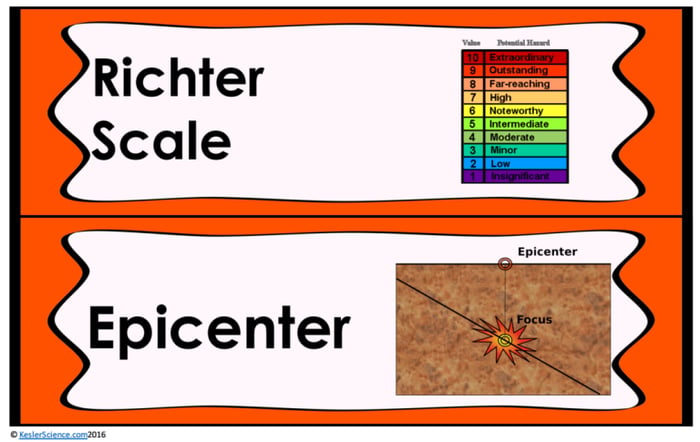
The teacher will help to clear up any misconceptions about the earthquakes. A major misconception students think is that earthquakes are likely to happen anywhere on Earth.
Estimated Class Time for the Engagement: 20-30 minutes
EXPLORATION
This student-centered station lab is set up so students can begin to explore earthquakes. Four of the stations are considered input stations where students are learning new information about earthquakes and four of the stations are output stations where students will be demonstrating their mastery of the input stations. Each of the stations is differentiated to challenge students using a different learning style. You can read more about how I set up the station labs here.
EXPLORE IT!
Students will be working in pairs to better understand how stress can cause the plates to move. Students will be using a land model to show the three types of stresses, compression, tension, and shearing. Students will be using this model to make a few observations and to answer related questions listed on the task cards.
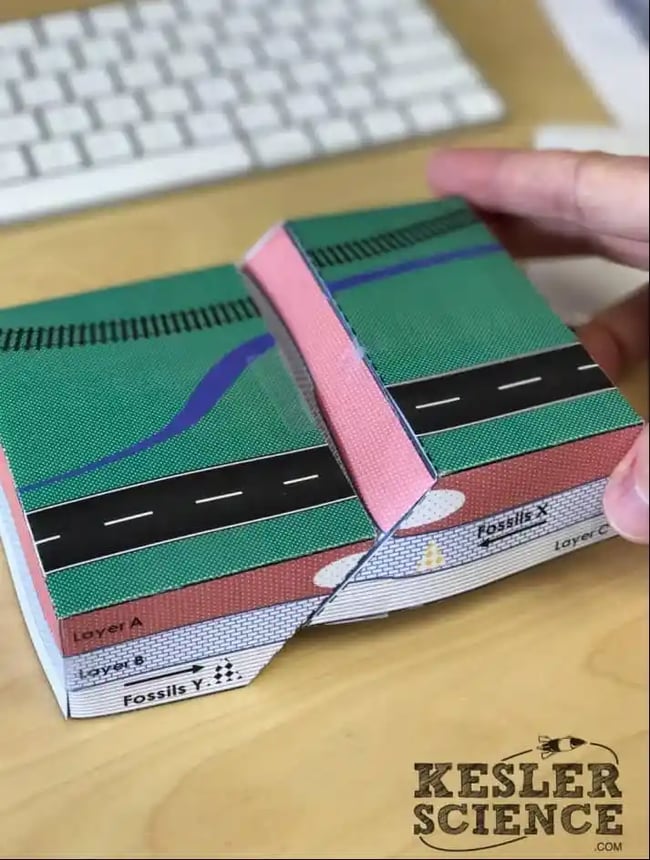
WATCH IT!
At this station, students will be watching a short video explaining a brief introduction to earthquakes. Students will then answer some questions related to the video and record their answers on their lab station sheet. For example: Describe the difference between the epicenter and the focus of an earthquake. What causes earthquakes? Where do most earthquakes occur? Why do we sometimes have earthquakes away from plate boundaries?
RESEARCH IT!
The research station will allow students to find out more information about earthquakes. While at this site, students will also be able to create a virtual earthquake in one of four given locations. Students will become seismologists and input data about S and P-waves, also where the epicenter would be located.
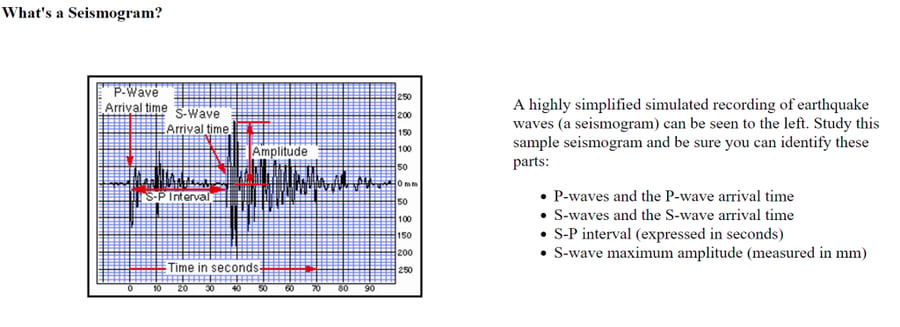
READ IT!
This station will provide students with a one page reading about earthquakes. In the reading students will learn about seismology and the two types of waves that earthquakes produce, P-waves and S-waves. There are 4 follow-up questions that the students will answer to show reading comprehension of the subject.
ASSESS IT!
The assess it station is where students will go to prove mastery over the concepts they learned in the lab. The questions are set up in a standardized format with multiple choice answers. Some questions include: Where do earthquakes generally originate? What does the image represent? Which statement is incorrect about earthquakes? Where is the epicenter?
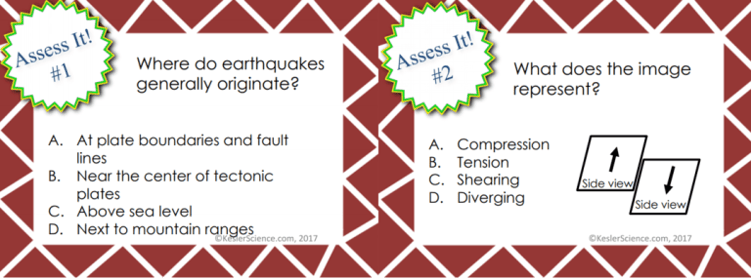
WRITE IT!
Students who can answer open-ended questions about the lab truly understand the concepts that are being taught. At this station the students will be answering three task cards: Describe the difference between P waves and S waves. How do scientists use data to determine the epicenter of an earthquake? How are plate boundaries and faults related to earthquakes?
ILLUSTRATE IT!
Your visual students will love this station. Students will label three diagrams with missing information about the three main types of stresses that rocks undergo at plate boundaries.
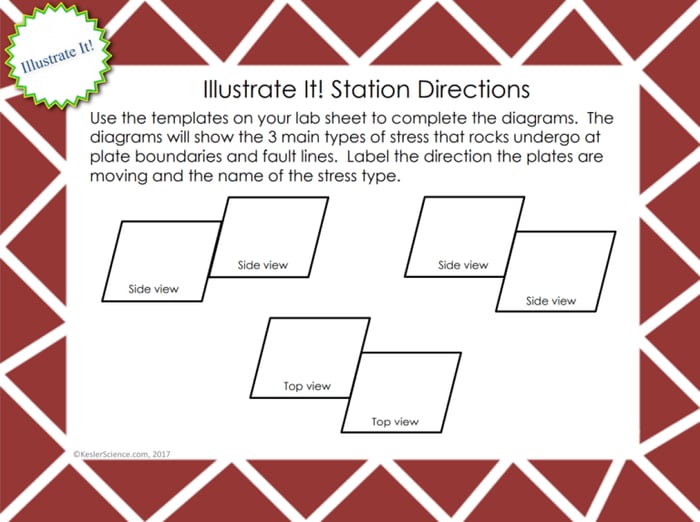
ORGANIZE IT!
The organize it station allows your students to organize key vocabulary terms with the correct definition. This will allow the teacher to see if the students understand terms related to earthquakes.
Estimated Class Time for the Exploration: 1-2, 45 minute class periods
EXPLANATION
The explanation activities will become much more engaging for the class once they have completed the exploration station lab. During the explanation piece, the teacher will be clearing up any misconceptions about earthquakes with an interactive PowerPoint, anchor charts, and interactive notebook activities. The earthquakes lesson includes a PowerPoint with activities scattered throughout to keep the students engaged.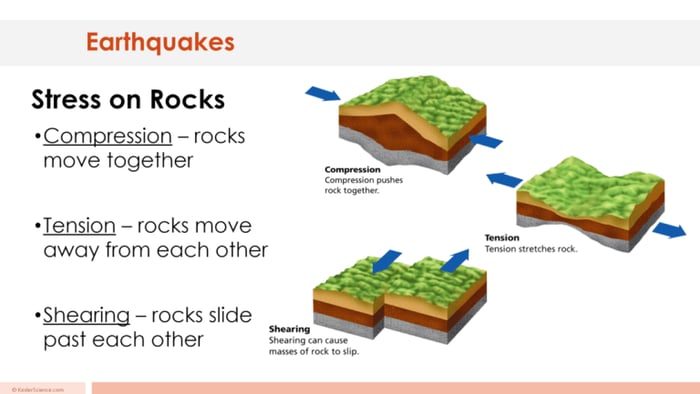

The students will also be interacting with their journals using INB templates for earthquakes. Each INB activity is designed to help students compartmentalize information for a greater understanding of the concept. The earthquakes INB templates allow students to focus their notes on the three main differential stresses on rocks at plate boundaries.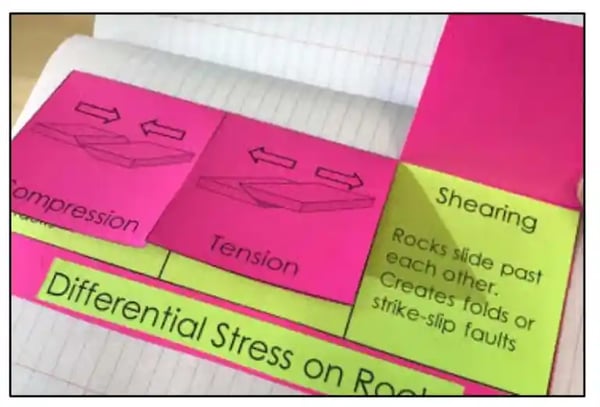 Estimated Class Time for the Exploration: 2-3, 45 minute class periods
Estimated Class Time for the Exploration: 2-3, 45 minute class periods
ELABORATION
The elaboration section of the 5E method of instruction is intended to give students choice on how they can prove mastery of the concept. When students are given choice the ‘buy-in’ is much greater than when the teacher tells them the project they will have to create. The elaboration project will allow students to create a presentation to teach about earthquakes.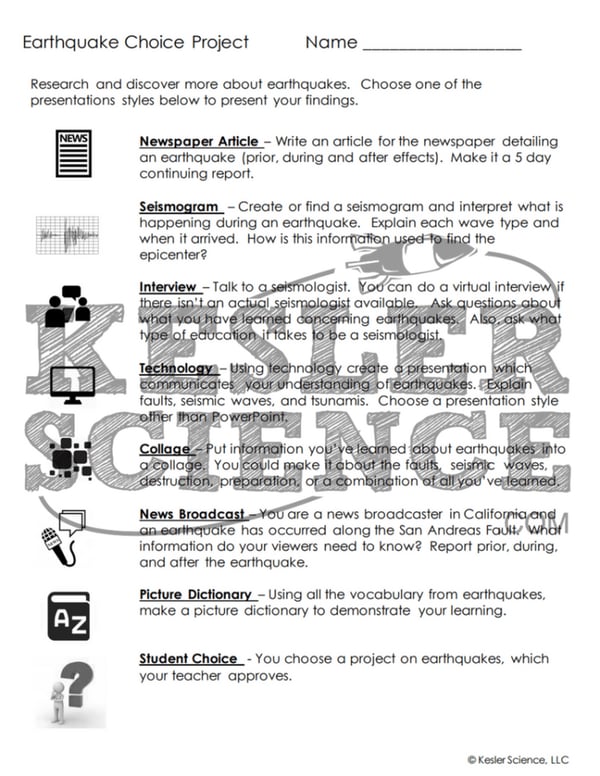 Estimated Class Time for the Elaboration: 2-3, 45 minute class periods (can also be used as an at-home project)
Estimated Class Time for the Elaboration: 2-3, 45 minute class periods (can also be used as an at-home project)
EVALUATION
The final piece of the 5E model is to evaluate student comprehension. Included in every 5E lesson is a homework assignment, assessment, and modified assessment. Research has shown that homework needs to be meaningful and applicable to real-world activities in order to be effective. When possible, I like to give open-ended assessments to truly gauge the student’s comprehension.
Estimated Class Time for the Elaboration: 1, 45 minute class period
DOWNLOAD THE FULL LESSON NOW
The full lesson is available for download from my TpT store. Save yourself a ton of time and grab it now.





